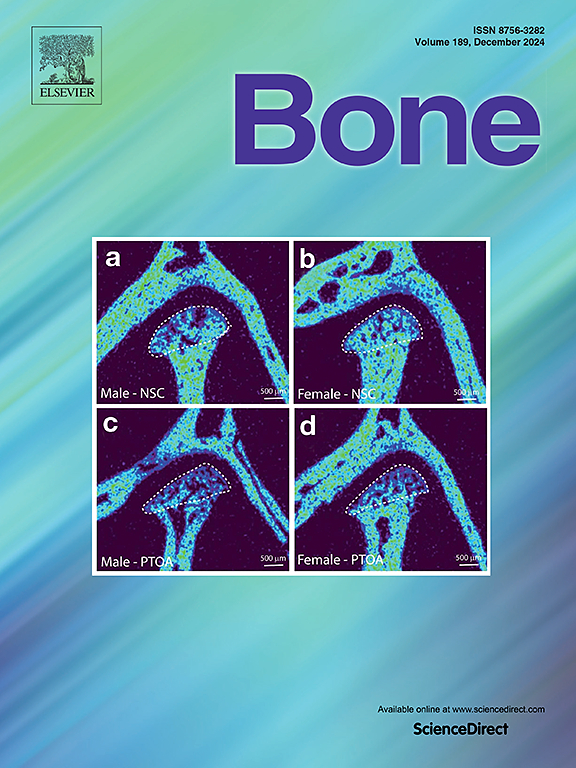年轻女孩明显不协调的低磷酸酶血症。
IF 3.5
2区 医学
Q2 ENDOCRINOLOGY & METABOLISM
引用次数: 0
摘要
低磷酸症(HPP)是由ALPL失活突变引起的先天性代谢错误,ALPL是编码细胞表面“组织非特异性”碱性磷酸酶(TNSALP)同工酶的基因。HPP的“生化特征”包括血清碱性磷酸酶活性低,同时TNSALP天然底物磷酸乙醇胺(PEA)、吡哆醛5'-磷酸(PLP)和无机焦磷酸(PPi)的血浆水平升高。过量的细胞外PPi (ePPi)抑制矿化,受影响的儿童过早脱落乳牙,经常出现虚弱和佝偻病。然而,HPP的严重程度在所有齿骨疾病中是最大的,并且不能完全解释为常染色体显性遗传与常染色体隐性遗传是否涉及bbbb470 ALPL突变。HPP表型的不一致有时甚至在具有相同ALPL基因型的全兄弟姐妹中表现出来。本文中,一名女孩的HPP明显不一致,表现为危及生命的高钙血症、发育不良和肾脏损害。随后假性脑瘤综合征导致失明,然后颅缝闭合需要颅底重建。然而,她没有变形,有中度低磷酸血症,血浆PLP水平正常,轻度HPP佝偻病的影像学特征。血浆n端甲状旁腺激素相关蛋白(PTHrP)升高提示恶性肿瘤,但在肾移植后得到纠正。当全外显子组测序显示轻度儿童HPP报告杂合ALPL c.1034C>T, p.A345V,并由自认为健康的母亲传播时,诊断为HPP。调节epi形成和其他潜在骨骼疾病的基因是完整的。高钙血症,对骨抗吸收药物无反应,及时用asfotase α TNSALP补充治疗纠正。她明显不一致的发现强调了儿童HPP的基因型/表型可塑性,以及她的临床过程对早期诊断的重要性。本文章由计算机程序翻译,如有差异,请以英文原文为准。
Markedly discordant hypophosphatasia in a young girl
Hypophosphatasia (HPP) is the inborn-error-of-metabolism from deactivating mutation(s) of ALPL, the gene that encodes the cell surface “tissue-nonspecific” isoenzyme of alkaline phosphatase (TNSALP). HPP's “biochemical signature” comprises low serum alkaline phosphatase activity together with elevated plasma levels of the TNSALP natural substrates phosphoethanolamine (PEA), pyridoxal 5′-phosphate (PLP), and inorganic pyrophosphate (PPi). Excess extracellular PPi (ePPi) inhibits mineralization and affected children prematurely shed deciduous teeth and often suffer weakness and rickets. Yet, HPP severity is greatest among all dento-osseous disorders and not fully explained by autosomal dominant versus autosomal recessive inheritance involving >470 ALPL mutations. Discordance of HPP phenotype sometimes manifests even among full siblings sharing an identical ALPL genotype.
Herein, a girl's markedly discordant HPP featured at presentation life-threatening hypercalcemia, failure-to-thrive, and renal compromise. Subsequent pseudotumor cerebri syndrome caused blindness, and then craniosynostosis required cranial vault reconstruction. However, she was not deformed, had moderate hypophosphatasemia, normal plasma PLP level, and mild radiographic features of HPP rickets. Elevated plasma N-terminal parathyroid hormone-related protein (PTHrP) suggested malignancy, but corrected after kidney transplantation. HPP was diagnosed when whole exome sequencing revealed heterozygous ALPL c.1034C>T, p.A345V found in mild pediatric HPP and transmitted by her mother who considered herself well. Genes conditioning ePPi formation and underlying other skeletal diseases were intact. Hypercalcemia, unresponsive to bone antiresorptive drugs, corrected promptly with asfotase alfa TNSALP supplementation therapy. Her markedly discordant findings highlight genotype/phenotype plasticity for pediatric HPP, and her clinical course importance for early diagnosis.
求助全文
通过发布文献求助,成功后即可免费获取论文全文。
去求助
来源期刊

Bone
医学-内分泌学与代谢
CiteScore
8.90
自引率
4.90%
发文量
264
审稿时长
30 days
期刊介绍:
BONE is an interdisciplinary forum for the rapid publication of original articles and reviews on basic, translational, and clinical aspects of bone and mineral metabolism. The Journal also encourages submissions related to interactions of bone with other organ systems, including cartilage, endocrine, muscle, fat, neural, vascular, gastrointestinal, hematopoietic, and immune systems. Particular attention is placed on the application of experimental studies to clinical practice.
 求助内容:
求助内容: 应助结果提醒方式:
应助结果提醒方式:


